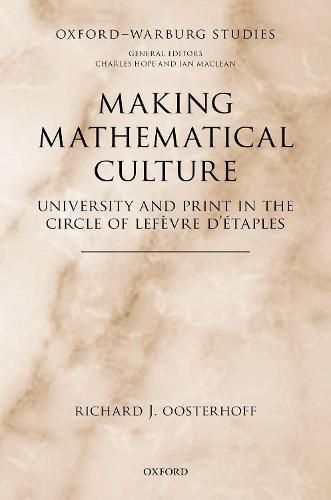Readings Newsletter
Become a Readings Member to make your shopping experience even easier.
Sign in or sign up for free!
You’re not far away from qualifying for FREE standard shipping within Australia
You’ve qualified for FREE standard shipping within Australia
The cart is loading…






In 1503, for the first time, a student in Paris was able to spend his entire university career studying only the printed textbooks of his teacher, thanks to the works of the humanist and university reformer Jacques Lefevre d'Etaples (c. 1455-1536). As printed books became central to the intellectual habits of following generations, Lefevre turned especially to mathematics as a way to renovate the medieval university.
Making Mathematical Culture argues this was a pivatol moment in the cultural history of Europe and explores how the rise of the printed book contributed to the growing profile of mathematics in the region. Using student manuscripts and annotated books, Making Mathematical Culture offers a new account of printed textbooks, as jointly made by masters and students, and how such collaborative practices informed approaches to mathematics.
$9.00 standard shipping within Australia
FREE standard shipping within Australia for orders over $100.00
Express & International shipping calculated at checkout
In 1503, for the first time, a student in Paris was able to spend his entire university career studying only the printed textbooks of his teacher, thanks to the works of the humanist and university reformer Jacques Lefevre d'Etaples (c. 1455-1536). As printed books became central to the intellectual habits of following generations, Lefevre turned especially to mathematics as a way to renovate the medieval university.
Making Mathematical Culture argues this was a pivatol moment in the cultural history of Europe and explores how the rise of the printed book contributed to the growing profile of mathematics in the region. Using student manuscripts and annotated books, Making Mathematical Culture offers a new account of printed textbooks, as jointly made by masters and students, and how such collaborative practices informed approaches to mathematics.